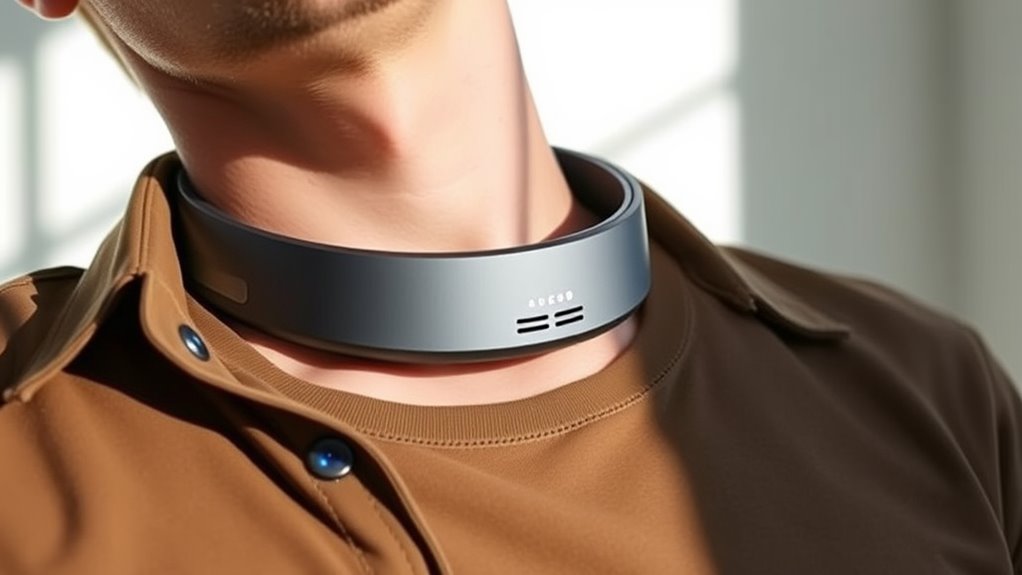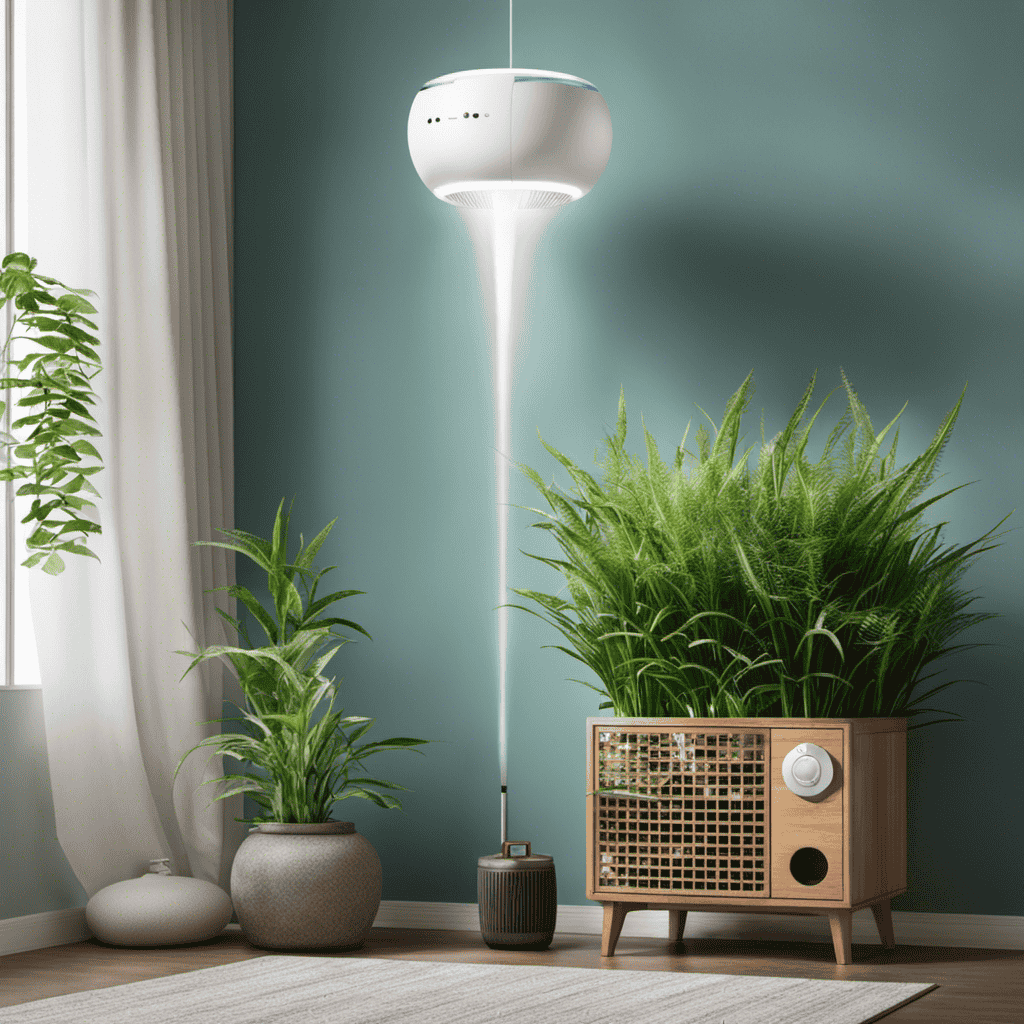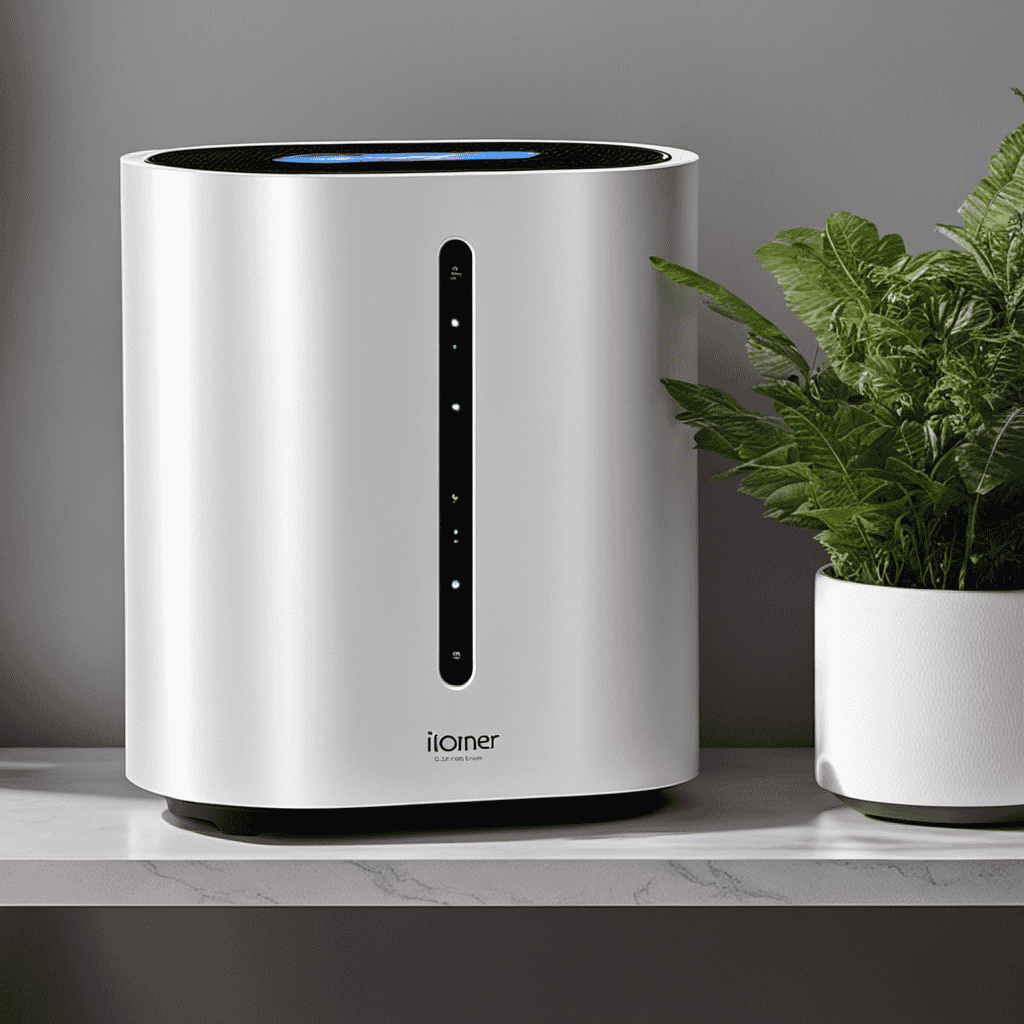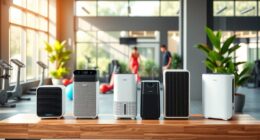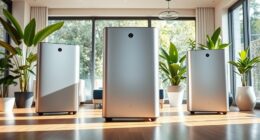Wearable neck-band purifiers can feel like a smart way to protect yourself from pollution, but their actual effectiveness varies. They use filters to clean the air you breathe in, offering quick personal relief in crowded or polluted spaces. However, not all models perform equally, and some may serve more as peace-of-mind tools than real protection. If you want to understand whether they’re truly worth considering, you’ll find useful insights ahead.
Key Takeaways
- Effectiveness varies; some models effectively filter pollutants, while others may offer limited protection or serve mainly as peace-of-mind tools.
- Designed for portability and personal use, providing immediate air quality improvement in polluted or crowded environments.
- User comfort, fit, and ease of maintenance impact their practicality and consistent daily wear.
- While they can enhance perceived safety, they do not replace comprehensive air quality management strategies.
- Market perception ranges from a promising innovation to a potential gimmick, depending on device quality and user expectations.

As concerns about air pollution and airborne viruses grow, wearable neck-band purifiers offer a convenient solution for cleaner air on the go. These devices are designed to be worn around your neck, creating a personal air shield that filters out pollutants and pathogens as you breathe. Their promise is simple: provide better air quality directly to you, wherever you are, without the need for bulky masks or stationary air purifiers. But do they truly deliver, or are they just another gimmick in the crowded health tech market?
Wearable neck-band purifiers promise personal air filtration on the go. Do they deliver or are they just a gimmick?
When considering a wearable neck-band purifier, your primary focus might be on air quality. These devices typically use HEPA filters, activated carbon, or other filtration technologies to trap harmful particles, odors, and microbes. The idea is that, by being close to your nose and mouth, the purifier can more effectively deliver cleaner air than relying on ambient air alone. This targeted approach can be especially beneficial if you’re in polluted urban environments or crowded indoor spaces. Many models boast the ability to filter out fine particulate matter (PM2.5), volatile organic compounds, and even some airborne viruses, giving you a sense of protection that’s immediate and personal.
However, user comfort plays a critical role in whether these devices are practical for everyday use. You’ll want a neck-band that’s lightweight and ergonomic, so it doesn’t add discomfort during long wear. Adjustable straps and breathable materials help ensure that the purifier doesn’t chafe or cause irritation. Some models feature silent or quiet operation modes, allowing you to carry on conversations or work without distraction. The ease of use, including simple controls and minimal maintenance, also influences comfort. If the device is cumbersome or loud, you might find yourself reluctant to wear it consistently, defeating its purpose.
While these purifiers are marketed as a portable, always-on solution, real-world performance varies. Not all devices can handle high pollution levels or effectively filter out viruses, and some may simply be a placebo for peace of mind. It’s essential to evaluate whether a neck-band purifier genuinely improves your perceived air quality or if it’s more of a trendy accessory. Keep in mind that no personal device can replace thorough air quality management, like avoiding heavily polluted areas or improving indoor ventilation. Additionally, understanding air quality standards can help you better assess whether these devices meet safety expectations.
Ultimately, wearable neck-band purifiers can offer a degree of protection and convenience, but they’re not a one-size-fits-all fix. For some, they provide a sense of security, especially in situations where air quality is compromised. For others, they might fall short of expectations or cause discomfort that discourages regular use. Whether they’re a game-changer or just a passing gimmick depends on your specific needs, environment, and how well the device fits into your daily routine.
Frequently Asked Questions
How Effective Are Neck-Band Purifiers Against Airborne Viruses?
You want to know how effective neck-band purifiers are against airborne viruses. These devices aim to improve air purification and virus filtration directly around your face and neck area. While some models may reduce certain particles, their overall effectiveness varies, and they shouldn’t replace masks or proper ventilation. Always check product reviews and scientific data to see if a neck-band purifier offers reliable virus filtration before relying on it for protection.
What Are the Safety Concerns With Wearable Air Purifiers?
You should consider safety concerns like electromagnetic interference, which could disrupt nearby electronics or pose health risks. Skin irritation is another issue, especially if the device isn’t hypoallergenic or causes friction. Always check for proper certifications and materials used. If you experience discomfort or suspect interference, stop use and consult a healthcare professional to guarantee your safety while using wearable air purifiers.
How Long Do the Batteries Typically Last on a Single Charge?
Did you know the average battery life for wearable neck-band purifiers is around 8 to 12 hours? You’ll typically get a full day’s use before needing to recharge. Charging time varies, but most models take about 2 to 3 hours to reach full capacity. So, you can easily plan your day around these battery life and charging times, ensuring you stay protected without interruptions.
Are Neck-Band Purifiers Suitable for Children or Sensitive Individuals?
When considering if neck-band purifiers are suitable for children or sensitive individuals, you should prioritize child safety and sensitive skin concerns. These devices may emit ions or ozone, which could irritate delicate skin or pose health risks. Always check manufacturer guidelines, opt for hypoallergenic materials, and consult healthcare professionals before use. Protect your loved ones by choosing options specifically designed with safety features for children and sensitive users.
Can These Devices Replace Traditional Masks or Air Filters?
You might see these devices as just a fashion statement, but they’re a technological innovation aiming to improve air quality. While they seem convenient, they can’t fully replace traditional masks or air filters, especially in high-pollution environments. Think of them as an extra layer of protection rather than a complete solution. Relying solely on neck-band purifiers could give you a false sense of security—so stick with proven masks when needed.
Conclusion
So, are wearable neck-band purifiers merely a gimmick or genuinely a game-changer? It’s worth weighing the worry and wonder they bring. If you’re seeking simple, stylish solutions to breathe better, they might just be worth a whirl. While skeptics stay skeptical, supporters see a savvy, space-saving solution. Ultimately, whether it’s a gimmick or a game-changer depends on your needs and your willingness to wonder. Wear, wonder, and decide if it’s worth the whim.
